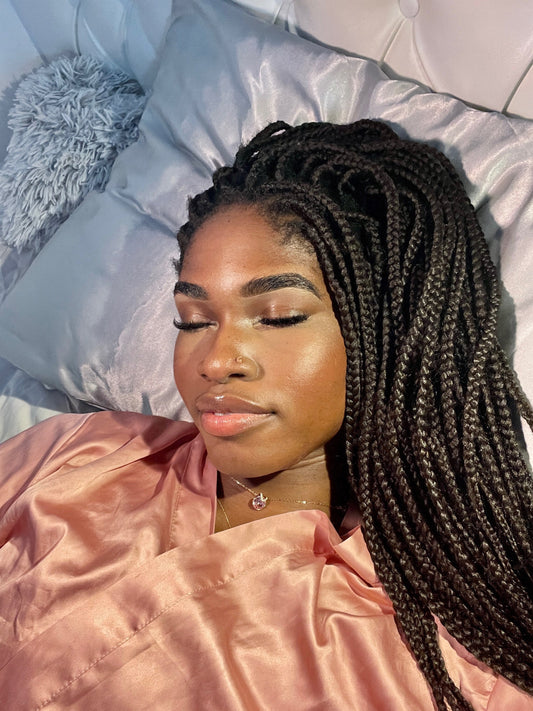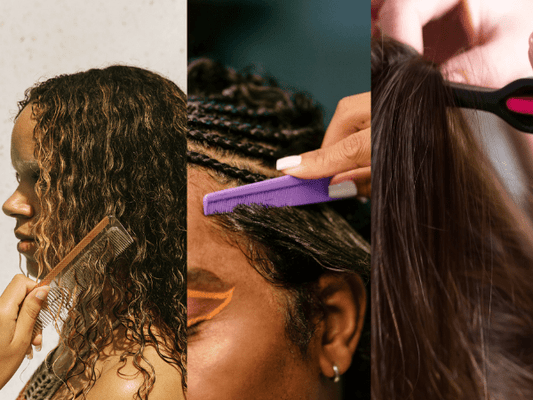In the journey to embrace natural hair textures, especially curly or coily hair, traditional shampooing practices are often reconsidered. Enter the realms of co-washing and the no-poo method, two hair care practices that have revolutionized how people approach washing their hair. This beginner's guide delves into what these methods entail, their benefits, and how to implement them effectively to unleash the true potential of your natural hair.
Understanding Co-Washing and the No-Poo Method
Co-Washing, short for conditioner washing, involves using a specially formulated conditioner or a co-wash product to cleanse the scalp and hair instead of traditional shampoo. This method focuses on removing build-up and dirt while maintaining the hair's natural oils.
The No-Poo Method takes this concept further by eliminating traditional shampoos altogether, advocating for natural cleansing alternatives (like baking soda and apple cider vinegar) or simply using water to maintain hair health and moisture balance.
Both practices stem from the understanding that traditional shampoos, with their harsh detergents (sulfates), can strip natural oils from the hair, leading to dryness, frizz, and damage—issues particularly prevalent among curly, coily, and wavy hair types.
Benefits of Co-Washing and No-Poo
- Moisture Retention: By avoiding harsh sulfates, these methods help retain the hair's natural moisture, crucial for curly and coily textures prone to dryness.
- Enhanced Curl Definition: With improved moisture balance, curls become more defined and manageable.
- Scalp Health: Gentle cleansing supports a healthy scalp environment, promoting hair growth and reducing issues like dandruff and irritation.
- Reduced Frizz: Maintaining natural oil levels helps combat frizz and static, leading to smoother hair.
- Less Damage: Minimizing the use of harsh chemicals and detergents reduces the risk of damage and breakage.
Implementing Co-Washing and the No-Poo Method
Starting with Co-Washing:
-
Choose the Right Products: Look for silicone-free conditioners or designated co-wash products. Silicones can build up on the hair, requiring sulfates to remove—counterintuitive to the co-washing principle.
-
Application: Apply the co-wash or conditioner to wet hair, focusing on the scalp. Use your fingertips to massage the scalp gently, loosening dirt, oil, and product buildup.
-
Rinsing: Thoroughly rinse your hair, ensuring all product is removed. This step is crucial to prevent buildup.
-
Frequency: Adjust based on your hair's needs. Some may co-wash weekly, while others might find their hair benefits from more or less frequent washing.
Adopting the No-Poo Method:
-
Transition Period: Transitioning from traditional shampoos to no-poo can involve an adjustment period where the scalp may produce excess oil as it rebalances its natural oil production. Be patient; this phase typically lasts a few weeks.
-
Cleansing Alternatives: Explore natural cleansing agents like apple cider vinegar rinses (to balance the scalp's pH and remove buildup) or baking soda (used sparingly as a scalp scrub). Always follow with a conditioning treatment.
-
Water-Only Washing: Some adopt a water-only approach, massaging the scalp under water to distribute natural oils through the hair.
-
Detoxing: Initially, you might use a clarifying shampoo to remove any existing buildup from products before starting the no-poo method fully.
Tips for Success
-
Scalp Massages: Regular scalp massages can stimulate blood flow, promoting healthy hair growth and helping distribute natural oils through the hair.
-
Hydration and Conditioning: Regardless of the method, maintaining hydration is key. Use leave-in conditioners, oils, and creams to keep hair moisturized.
-
Listen to Your Hair: Everyone's hair responds differently. Pay attention to how your hair and scalp react and adjust your routine accordingly.
-
Patience and Consistency: Transitioning to these methods requires patience. It may take time to see the full benefits as your hair and scalp adjust.
Potential Challenges
-
Adjustment Period: The initial adjustment period can be challenging, with potential for increased oiliness or scalp sensitivity as your hair adapts.
-
Finding the Right Products: It may take some experimentation to find the products that work best for your hair type and needs.
-
Buildup: Without regular clarifying, co-washing, and no-poo can lead to buildup. Incorporate a clarifying rinse or treatment as needed to maintain scalp health.
Conclusion
Co-washing and the no-poo method offer refreshing alternatives to traditional hair care routines, particularly benefiting those with curly, coily, and wavy hair textures. By understanding and embracing these practices, you can maintain your hair's natural











